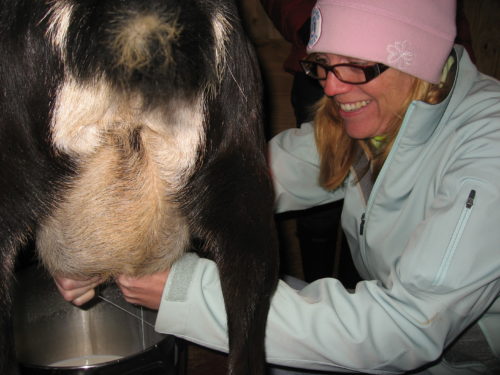
There are plenty of unique skincare methods out there. Bird poop facial anyone? Snail mucus mask? Compared to those extreme beauty practices, using goat milk to aid your complexion seems comparatively tame.
According to the website of soap and skincare product purveyor Goat Milk Stuff, the alpha-hydroxy acids in goat’s milk can break down bonds that hold dead skin cells together, revealing smoother skin underneath. Caprine milk is also high in vitamin A, which can reduce wrinkles and inflammation.
Its benefits in skincare were noted in ancient times. As one of the first domesticated animals, goats were known as the “poor man’s cow,” eating almost anything and easily adapting to new environments.
Traditionally, communities utilized every part of the goat’s body. While ancient Roman’s used goat tallow in their soap, ancient Egyptians used the milk for smoother skin. In her book Skin Saver Remedies, author Julia Stepanov describes how Cleopatra bathed in goat milk to keep her skin wrinkle-free.
The tradition continues today, with many small goat farms—including cheesemakers—selling moisturizers and soaps. The milk is also a component in luxury brands like Kate Somerville. The company has released a Goat Milk Moisturizing Cream and De-Puffing Eye Balm, stating that the “lactose from goat’s milk helps soothe and moisturize dry, sensitive, and damaged skin.”

Kathy Bukolt, milking Lucy at The Goat Cheese Making Class. Photo Credit: The Goat Cheese Lady/ Culture files
Goat’s milk is also the main ingredient in other products for hair and lips. One company even makes goat milk laundry detergent. If you’re not keen on buying new products, you can also combine store bought goat’s milk with other household ingredients to create homemade face wash or shampoo.
Want to get even more adventurous? Try Bounce Cheese Cream, a moisturizing cream from Korea infused with whey protein. Its texture has been compared to mozzarella cheese. Really?? No whey!



